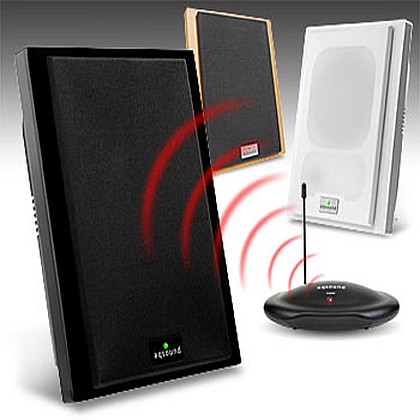When Molecules Collide
At its most basic level, sound is one way we perceive vibrations. When an object inside the Earth’s atmosphere vibrates, it pushes against and pulls on surrounding air molecules. In turn, they affect surrounding air molecules. It becomes a chain reaction.
Imagine a bell. When it rings, its surface actually flexes inwards and outwards. When the bell’s surface flexes inwards, it pulls air molecules toward the surface of the bell. They pull on other molecules around them, and those pull on even more molecules. We call this area of decreasing air pressure rarefaction.
Extending outward from the vibrating object is a wave of air pressure fluctuations. If you happen to be within range of the wave — the energy dissipates over distance — your eardrum vibrates in reaction to the changes in pressure. Your eardrum is connected to tiny bones in your middle ear. These bones connect the eardrum to the cochlea in your inner ear. The cochlea is filled with fluid and tiny little hairs. As the bones vibrate the cochlea, fluid flows against the hairs, which triggers nerve signals that move from the ear to the brain. Your brain then interprets these signals as sound.
Sound can travel through solids, liquids and gases. If you put your ear down against a table and have someone gently scratch upon it, you’ll hear it loud and clear. That’s because sound generally travels more efficiently through solids than gases. This is also why sound doesn’t travel in the vacuum of space — there aren’t enough particles to collide with each other to propagate sound.
The nature of the sound depends upon how forcefully and frequently the molecules bump into each other. Molecules that really bash into each other create louder sounds — a large mallet striking a huge gong is going to make molecules collide more forcefully than a tiny bell would. Faster fluctuations in the atmosphere create sounds with a higher pitch than those that have slower fluctuations. The gong’s sound won’t just be louder than the tiny bell, but also deeper in pitch — the bell creates faster fluctuations in air pressure than the gong does.
Speakers — wireless and wired alike — create sound through vibrations. All it takes is a little electricity and magnetism.
Speaker Basics
A typical speaker has several parts. The part that vibrates to make the sound is called a cone or diaphragm. It’s a flexible surface that can be pushed out or pulled inward by the rest of the speaker mechanism. It’s the diaphragm that creates the changes in atmospheric pressure that we perceive as sound.
An electromagnet called a voice coil attaches to the center of the cone. A permanent magnet — a magnet that keeps its magnetic field without electricity — sits behind the voice coil on the other side of the cone. This means that a speaker uses two different types of magnets, which is what gives speakers the power to push and pull against the atmosphere rapidly.
Electromagnets take advantage of the relationship between electricity and magnetic fields. As electricity flows through a wire, it generates a magnetic field. Coiling electrical wire around a core — like an iron nail — creates a magnet when the current is on. Turning off the electricity causes the magnetic field to dissipate.
Magnets have two poles — a north pole and a south pole. Permanent magnets always have the same north and south poles. But an electromagnet’s poles can switch depending upon the flow of electricity. Forcing the flow of electricity to reverse also reverses the position of the electromagnet’s poles.
This is important because with magnets, similar poles repel one another and opposite poles attract. By altering the flow of electricity through the voice coil’s electromagnet, the permanent magnet’s magnetic field will either push or pull on the voice coil. Since the voice coil attaches to the diaphragm, this will cause the diaphragm to pull inward or push outward.
Speakers alter the flow of electricity within a voice coil thousands of times per second, creating the precise vibrations necessary to create sounds ranging from deep booming bass notes to the high pitch of a piccolo.
In traditional speakers, electricity flows from an amplifier within the source — such as a stereo system — to the speaker over two wires. This allows the source to alternate the flow of electricity to the speakers, which causes the electromagnet’s poles to switch. Wireless speakers have to create the same effect without the benefit of wires. But how do they do that?
For more Detail: How Wireless Speakers Work

